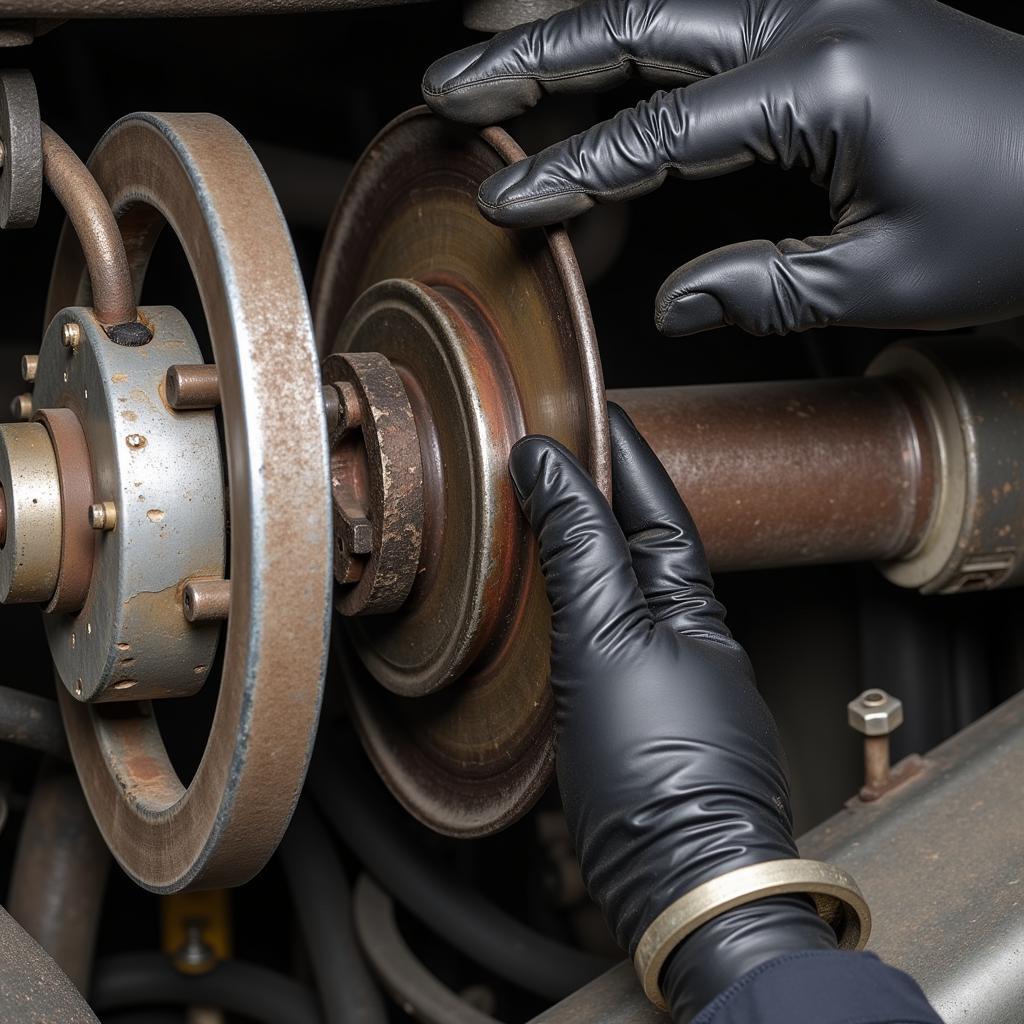The BMW footwell module (FRM) is a critical component responsible for controlling various electrical functions in your vehicle, including lighting, power windows, central locking, and more. A malfunctioning FRM can lead to a cascade of frustrating problems, from flickering lights to complete system failures. Understanding the common issues, diagnostic procedures, and repair options can save you time and money.
The FRM is located under the dashboard on the driver’s side, exposed to potential water damage from leaks or spills. This can cause corrosion and short circuits, leading to module failure. Symptoms of a failing FRM are diverse and can include issues with the central locking system, exterior lighting, power windows, turn signals, and even the wipers. For example, you might experience doors randomly locking or unlocking, headlights flickering or not working at all, windows getting stuck, or turn signals failing to operate.
Common BMW FRM Problems
One common problem is the failure of the window regulators. If your windows are unresponsive or only move intermittently, it could be a sign of a faulty FRM. Another frequently reported issue involves the central locking system. This could manifest as doors not locking or unlocking properly, or the remote key fob becoming unresponsive. Exterior lighting problems, like malfunctioning headlights, taillights, or interior lights, are also common indicators of FRM issues. If you’re experiencing any of these symptoms, it’s likely time to investigate the FRM. Similar to bmw frm failure, other components like the power mirrors and wipers can also be affected.
Diagnosing FRM Issues
Diagnosing FRM issues typically involves using specialized diagnostic software to read fault codes stored in the module. These codes can pinpoint the specific area of the FRM experiencing problems. It is important to use BMW-specific diagnostic tools to accurately read and interpret the codes. Sometimes, a simple software update or reprogramming can resolve the issue. However, in cases of hardware damage, the FRM might need to be repaired or replaced.
Repairing or Replacing the BMW FRM
Repairing a BMW FRM can sometimes involve replacing individual components within the module, such as relays or fuses. However, in many cases, it’s more cost-effective to replace the entire unit. If you are technically inclined, you can find FRM repair kits online. These kits often come with instructions and tools to help you replace damaged components. However, this requires a certain level of expertise, and incorrect installation can cause further damage.
“A proper diagnosis is crucial before attempting any repairs. Using the correct diagnostic tools and interpreting the fault codes accurately can save you from unnecessary expenses,” says Michael Schmidt, Senior Automotive Electrical Engineer at CARDIAGTECH.
Remote Programming and Coding for BMW FRM
Another option for addressing FRM issues is remote programming and coding. This involves connecting to your vehicle’s onboard diagnostics port remotely and installing or updating the FRM software. This is a convenient and efficient method, especially for software-related problems. As with bmw frm footwell module repair san mateo ca, choosing a reputable service provider with expertise in BMW FRMs is essential for successful remote programming.
For more complex hardware issues, replacing the FRM is often necessary. When replacing the FRM, it needs to be coded or programmed to match your vehicle’s specific configuration. This process requires specialized software and knowledge of BMW systems.
“FRM replacement is straightforward but requires specialized programming. The new module needs to be correctly configured to your car’s specifications to ensure proper functionality,” explains Maria Rodriguez, Lead Diagnostic Technician at CARDIAGTECH. This relates closely to what you can find in frm bmw repair.
Conclusion
The BMW footwell module (FRM) plays a vital role in the proper functioning of various electrical systems in your car. Understanding the common problems associated with the FRM and the available repair options can help you address these issues effectively. From simple software updates to complete module replacement, taking the right steps can get your BMW back on the road with all its systems working as intended. Similar to information found on bmw frm repair, proper diagnosis and expert assistance are key to resolving FRM-related problems efficiently.
FAQ
-
What are the common symptoms of a faulty BMW FRM?
Common symptoms include issues with central locking, windows, exterior lights, and turn signals. -
How is a BMW FRM diagnosed?
Diagnosis involves using BMW-specific diagnostic software to read fault codes. -
Can a BMW FRM be repaired?
Sometimes, repairs can involve replacing components within the module, but often replacement is more cost-effective. -
What is involved in replacing a BMW FRM?
Replacement involves physically installing the new module and then programming it to match the vehicle’s configuration. -
Can FRM programming be done remotely?
Yes, remote programming is a convenient option for software-related issues. -
What are the costs associated with FRM repair or replacement?
Costs vary depending on the specific issue and whether repair or replacement is required. -
Where can I find reliable FRM repair or replacement services?
Reputable auto repair shops specializing in BMWs can provide these services. This is also similar to issues faced by owners of the BMW X5, as discussed in frm bmw x5.
Need more information or assistance? We encourage you to explore additional resources on our website related to BMW FRM issues, diagnostics, and repair options.
Contact us via WhatsApp: +1 (641) 206-8880, Email: [email protected] or visit us at 276 Reock St, City of Orange, NJ 07050, United States. We offer 24/7 customer support.


